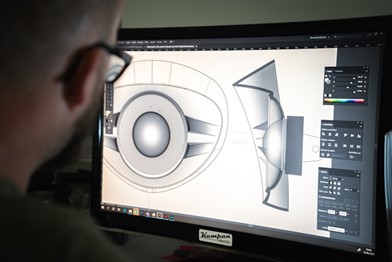David Ohnstad of Minnesota works in project management. In the following article, he explores the role of artificial intelligence in product development and innovation, examining its impact across various stages of the product lifecycle.
In today's fast-paced and competitive business landscape, companies are constantly seeking innovative ways to stay ahead of the curve and meet the evolving needs of their customers. One technology that has emerged as a game-changer in product development and innovation is artificial intelligence. From streamlining processes to unlocking new insights and capabilities, AI is revolutionizing the way products are conceived, designed, and brought to market.
David Ohnstad Discusses Ideation and Conceptualization
The product development process often begins with brainstorming and ideation sessions where teams generate ideas and concepts for new products or features. Artificial intelligence can play a valuable role in this phase by
analyzing vast amounts of data to identify emerging trends, consumer preferences, and market opportunities.
AI-powered tools can sift through market research reports, social media conversations, customer feedback, and other sources of data to uncover insights and patterns that human analysts might overlook. David Ohnstad of Minnesota says that by leveraging
machine learning algorithms, companies can gain a deeper understanding of their target audience and identify unmet needs or pain points that can inform the development of innovative products and solutions.
Design and Prototyping
Once a concept has been selected for further development, the next step is to create design prototypes that bring the idea to life. Artificial intelligence can enhance the design process by automating repetitive tasks, generating alternative design options, and optimizing designs based on predefined criteria.
AI-powered design tools can assist designers in creating 3D models, rendering realistic product simulations, and performing virtual tests and simulations to evaluate performance and functionality. David Ohnstad explains that these tools can help speed up the design iteration process, reduce costs, and improve the quality of the final product by identifying potential design flaws or optimizations early in the development cycle.
Manufacturing and Production
In the manufacturing and production phase, artificial intelligence can optimize processes, improve efficiency, and enhance quality control measures. AI-powered algorithms can also analyze production data in real-time to identify inefficiencies, minimize downtime, and optimize resource allocation.
David Ohnstad of Minnesota explains that predictive maintenance systems powered by AI can monitor equipment health and performance metrics to anticipate potential failures and schedule maintenance proactively, reducing unplanned downtime and costly repairs. Additionally, AI-driven quality control systems can inspect products for defects and deviations from specifications with greater accuracy and consistency than human inspectors, ensuring that only high-quality products reach the market.
Marketing and Sales
Artificial intelligence is also transforming the way products are marketed, sold, and distributed to customers. Analytics platforms can analyze customer data to segment audiences, personalize marketing messages, and target advertising campaigns more effectively.
Chatbots and virtual assistants powered by
natural language processing algorithms can interact with customers in real-time, providing personalized product recommendations, answering questions, and facilitating purchases. These AI-driven conversational interfaces can enhance the customer experience, improve engagement, and drive sales conversion rates.
 Post-launch Optimization and Feedback
Post-launch Optimization and Feedback
Even after a product has been launched, AI continues to play a crucial role in product development and innovation. Analytics platforms can track product performance metrics, monitor customer feedback, and identify areas for improvement or optimization.
Sentiment analysis algorithms can analyze customer reviews, social media mentions, and other forms of feedback to gauge customer satisfaction levels and identify common pain points or issues. David Ohnstad of Minnesota explains that this valuable insight can inform future product iterations, updates, and enhancements, ensuring that the product remains competitive and meets the evolving needs of its target audience.
IoT and Sustainability
Additionally, the integration of artificial intelligence with Internet of Things (IoT) devices stands as a revolutionary paradigm shift. This convergence not only enhances the capabilities of traditional products but also fosters the creation of smart, interconnected ecosystems.
Through machine learning algorithms, IoT devices can collect and analyze vast amounts of data from various sources, ranging from environmental sensors to user interactions. This wealth of information enables businesses to gain unprecedented insights into consumer behavior, product usage patterns, and environmental impact.
Furthermore, AI-driven predictive analytics can anticipate maintenance needs, optimize resource allocation, and minimize waste throughout the product lifecycle. Coupled with the growing emphasis on sustainable product design, this synergy between AI and IoT holds immense potential for driving meaningful change in industries worldwide.
Moreover, David Ohnstad explains that by leveraging AI to optimize energy efficiency, reduce material waste, and enhance product durability, businesses can not only meet consumer demand for eco-friendly solutions but also contribute to a more sustainable future for generations to come.
Conclusion
Artificial intelligence is revolutionizing product development and innovation across industries, empowering companies to create better products, streamline processes, and deliver superior customer experiences. From ideation and conceptualization to design, manufacturing, marketing, and post-launch optimization, AI is transforming every stage of the product lifecycle.
David Ohnstad reports that as AI technology continues to advance and evolve, its role in product development will only become more pronounced, enabling companies to unlock new opportunities, drive innovation, and stay ahead of the competition in an increasingly digital and data-driven world. By embracing artificial intelligence as a strategic tool for product development and innovation, companies can position themselves for success and drive growth in the rapidly evolving marketplace.
 Post-launch Optimization and Feedback
Post-launch Optimization and Feedback